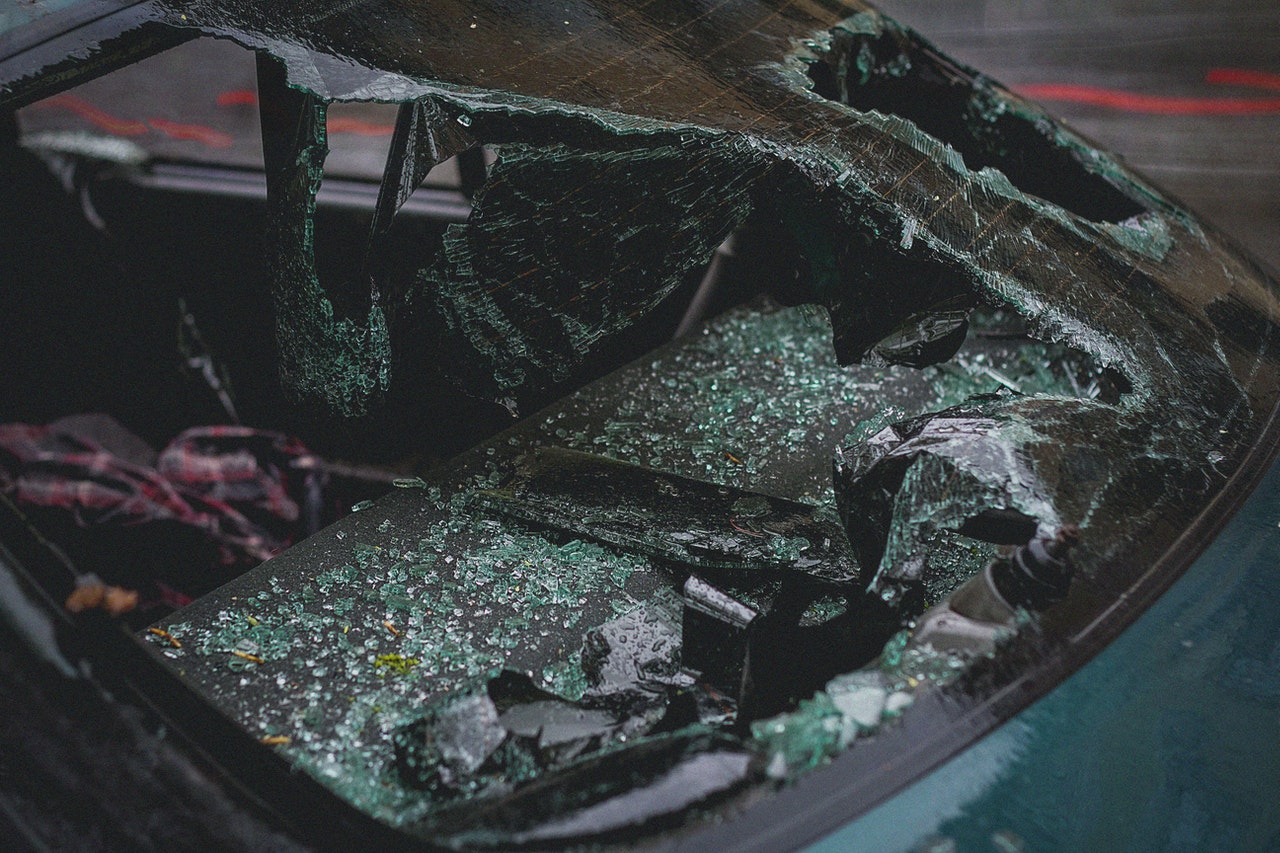Last Second Larry just attempted to make a right turn from the far left lane, trying to get
to the freeway on-ramp at the last second, as he passes by it. He cuts across the front
of Good Joe Driver who is proceeding straight ahead in the curbside lane nearest the
on-ramp. Last Second Larry sideswipes the front of Good Joe’s van, causing vehicle
damage and a broken window.
The two drivers pull over to exchange information as required by California law. Now
what? What should Last Second Larry say, and what should Good Joe say? Or should
they say anything at all ? Statements made by either driver can be used against them
in any insurance claim that follows, or in court litigation. Both Larry and Joe should keep
their conversation to a minimum, but do what is necessary after an accident.
Good Joe is understandably angry and inconvenienced. He doesn’t need this headache
right now, and he begins to feel neck and back spasms. He wants to get in Larry’s face,
but he should refrain from doing so. He might ask Larry “What were you thinking? Are
you lost, do you know where you are going?” as these questions may elicit an important
explanation and admission from Larry. Avoid accusations and profanity. Keep calm.
Good Joe should definitely ask if Larry is hurt, or if any passengers are hurt, and
whether anyone needs medical attention. If not, the parties do not have to contact the
police. If no one is injured, and both vehicles are drivable, the parties should simply
exchange insurance and driver’s license information themselves.
Last Second Larry is at fault here, and if he is properly insured as required by California
law, he can begin with a brief but general apology of “I’m sorry,” but nothing more. The
law generally accepts apologetic expressions at the scene of an accident, to de-
escalate the situation and keep everyone calm. “I’m sorry, here’s my insurance
information” is not necessarily an admission of fault, but a civilized and calm way to
engage with the other driver without starting an argument. Larry should avoid saying
things like “I didn’t see you,” or “I was looking for…” Larry should ask Joe if he is hurt,
needs medical attention, or can provide the identities of his passengers.
It is very common and normal behavior for one or both drivers to say “No, I’m not hurt,”
at the scene, as long as they are not visibly bleeding, on their feet, and conscious. Any
accident can cause people to be disoriented and hyped up, and oblivious to a bruise
swelling or neck muscle tightening up at the scene. If Joe is asked if he is hurt, he
should simply say “I don’t appear to be hurt right now” or “I don’t need an ambulance.”
These responses would not preclude a claim for personal injuries later, because often
the symptoms of soreness, swelling, and pain do not appear or worsen until hours after
the accident. Good Joe can decline an ambulance, but shouldn’t say that he “is not
hurt.”
If Wally Witness suddenly shows up saying “I saw the whole thing, Last Second Larry is
at fault,” Good Joe should simply take Wally’s name and cell number, and make a note
of what he said. Good Joe should not make any statements to Wally, other than “thank
you for stopping, thank you for your help.” Wally may later turn on Joe, or simply
change his mind about cooperating.
Once again, both Larry and Joe should keep their conversation to a minimum,
exchange information, take photos of the damage, and get off the road. Each driver
should make a note of any statements made by the other driver, and keep it for future
use in any claim or litigation.
If you have been involved in an accident that was not your fault, and suffered bodily
injuries as a result, you can contact the Law Offices of Philip Cohen for help in
presenting a claim for all damages that you may be entitled to recover. Our
experienced personal injury attorneys and staff will be pleased to answer all your
questions, and an initial consultation is free of charge.


Leave A Comment